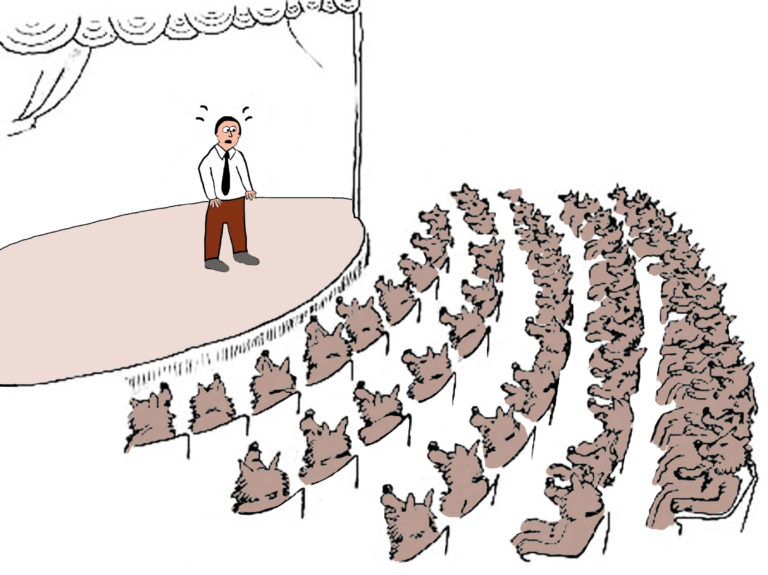
Most veterinarians in ownership and management roles have the best intentions for their staff. They truly want to foster a good veterinary practice culture. How they create a positive and supportive work environment, however, can be elusive.
So, at the 2024 Veterinary Meeting and Expo in Orlando, Florida, Carrie Jurney, DVM, Dipl. ACVIM, described four toxic work culture traps veterinary practice managers often fall into and how to avoid them. Jurney owns Remedy Veterinary Specialists, a small animal practice in San Francisco, and is the immediate past president of Not One More Vet (NOMV). The four toxic team cultures (aka “the four horsemen of the veterinary wellness apocalypse”) she addressed are ambiguity, stagnation, sacrifice, and authority.
Ambiguity
Ambiguity—not understanding expectations, rules, or roles—has been shown to specifically contribute to well-being problems in veterinarians and support staff, said Jurney. To clarify these expectations in your practice, she advised starting with your mission statement.
“This is the concise statement of why the practice even exists,” she said. “You’re talking about your company values, the fundamental beliefs that guide your actions. Being conscious of your values helps you make important decisions.”
Jurney recommended creating a list of 8-10 company values (e.g., efficiency, customer service, team development, revenue, etc.) and ranking them in order of importance. Then, double-check those values against your mission statement.
“It’s helpful to know what your core values are and which one matters more,” she said.
Have your team members rank the same list of values. “Your values and theirs aren’t going to match perfectly, and that’s OK,” she explained. “It’s going to illuminate the roles and tasks they’re going to be better at—we work harder at the things we value. It also shows where they’re going to struggle. If we want everyone to feel fulfilled, we need to put people where they thrive.”
To be exceptionally clear about individual roles and tasks, create job descriptions, workflows, and checklists. Then trust your employees to follow them.
“Decision authority—the ability to make decisions—and decision latitude—the ability to decide how and when and why a decision is being made—are both incredibly protective for well-being,” said Jurney. “Once we give our employes the power to make a decision, and we know we’re going to be OK with that decision because we set the guidelines, we need to trust them and support them. If they follow your guidelines, don’t second-guess their decision. If they made a decision you don’t support, you need to revisit the guidelines and see where you weren’t clear.”
Another important factor in reducing ambiguity is communication. Jurney recommended setting aside time to communicate via daily and weekly meetings as well as six-month reviews.
“So, we’re going to define what’s important to us, communicate that very clearly, and make sure we live by those rules,” she said.
Stagnation
It’s easy to get caught up in the whirlwind of veterinary practice and think, “this is just how it is” or “this is how we’ve always done it.” There’s also comfort in routine. Jurney cautioned veterinarians against falling into this stagnation trap.
“It’s hard to be creative and innovative when you’re grinding through overbooked days,” she said.
She offered three ways to avoid stagnation:
- Pay fair salaries: While money isn’t everything, said Jurney, evidence shows it affects morale.
- Reduce work-related stress: “A lot of us who are trapped here are just really burned out,” she said. “We’re just going through the motions.”
- Hire support staff: Jurney cited one study showing that having more veterinary technicians in practice was associated with job satisfaction and higher engagement. In light of the current shortage of vet techs, she suggested “home-growing” your own talent with unlicensed assistants and helping them pursue further education as RVTs down the line.
Sacrifice
“No is the dirtiest word in veterinary medicine,” said Jurney.
Boundaries are particularly hard to set in caregiving professions. “We find a great deal of value in helping. It drives us, it fulfills use, it’s a core value,” she noted. “However, it can get us in a bad cycle where we chip off a little piece of ourselves for anyone who asks. And once we start doing that and feeling that burnout, we start to expect the same of other people. Because if I don’t have any boundaries, why should you?”
Jurney surveyed NOMV’s forum of nearly 30,000 veterinarians of all specialties about their work-life balance and reported concerning results:
- 34% took < 1 week of vacation a year.
- 44% never took lunch breaks.
- 33% never had uninterrupted personal time.
- 73% took work home on a regular basis.
“To have a healthy work environment, you need to recognize your employees are more than their jobs,” she said. “We need to support healthy boundaries, like scheduling and enforcing lunch and breaks.”
She recommended scheduling time for even minor or mundane tasks like updating records, because “if it’s not on the schedule and the schedule’s full, we’re asking people to use their personal time to get those things done.”
Jurney urged practice managers to try in whatever way they can to give some autonomy and control back to employees regarding their schedules. If there’s a schedule change or a late emergency, for instance, give your team a say in what happens; ask if they can do it, rather than demand they do.
Authority
Hierarchy and authority can destroy one’s feeling of added value, respect, control over their schedule, and opportunity for career and self-improvement. To avoid these pitfalls, Jurney recommended:
- Giving your team autonomy over their tasks so they feel valued.
- Offering CE dollars to everyone in your practice so they can grow in their careers.
- Being aware of and respecting each other. “Respect is a top-down phenomenon; you have to give to receive,” she explained. “My strategy is to have weekly feedback meetings inviting employees to tell me what went wrong and what can we do better as a team. You have to accept that feedback, even if it’s about you, and show a willingness to adapt.”
- Never punishing honest mistakes. “We tend toward perfection in our field,” she said. “When things go wrong, ask the perspective of everyone involved. Ask them to be a part of the solution. If there are repeated issues, coach around that. More than that, plan for mistakes. People will always make mistakes, but systems and checklists help us avoid big ones.”
At the end of the day, said Jurney, growth is what it’s all about. “These problems are not easy but not insurmountable. Clarify, innovate, set boundaries, and work on building a team.”








